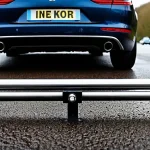Diagnosing Electrical Issues in 90s British Cars
Electrical troubleshooting in 90s British cars requires a methodical approach due to the era’s unique wiring designs and component vulnerabilities. Start by identifying key symptoms, such as flickering dashboard lights or intermittent starting problems, which often indicate connection faults or deteriorating wiring.
Begin the diagnosing 90s British car electrical problems process with a visual inspection. Look for corroded terminals, brittle wires, and loose connectors—common culprits in these classic vehicles. Next, use a multimeter to measure voltage drops across suspected areas, confirming continuity or pinpointing shorts.
Also to see : Extend your tires’ lifespan: essential wheel alignment tips for uk drivers
The importance of diagnostic tools cannot be overstated. While 90s British cars predate many modern onboard diagnostic systems, some models support basic fault code reading through specialized scanners. These tools help identify faults more precisely, reducing guesswork. For models without such capabilities, using wiring diagrams alongside test equipment aids in systematic fault isolation.
Understanding the specific signs unique to 1990s British automotive electrical issues, such as grounding faults due to poor chassis connections, streamlines repair efforts. Following this step-by-step electrical troubleshooting method ensures efficient British car maintenance, preserving both vehicle reliability and classic character.
Also read : Boost your fuel economy: top tips for improving vehicle aerodynamics on uk motorways
Common Electrical Problems by Popular 90s British Cars
Classic British car models from the 1990s, including Jaguar, Land Rover, MG, and Rover, often share some common electrical faults that enthusiasts and restorers should be aware of. One of the most frequent issues is faulty wiring harnesses that degrade over time, leading to intermittent power losses or complete system failures. This is especially problematic in Land Rovers, where harsh off-road conditions expedite cable wear.
Another typical problem in these British car models is failure of the alternator and voltage regulator, which can cause battery drainage or erratic dashboard warning lights. MG and Rover vehicles from this era often exhibit issues with their central locking systems and power windows due to faulty wiring or motors. Jaguar owners might encounter malfunctioning electrical relays, affecting headlamp and starter systems.
Across model ranges, these faults tend to follow patterns related to poor weatherproofing and aging insulation. In some cases, manufacturer advisories and recalls attempted to address these electrical problems, notably with wiring upgrades or recall of relays. Recognising these common faults early can save much time and expense during classic car repairs, making diagnostics focused on these areas highly recommended.
Understanding Wiring Diagrams and System Design
Reading 90s British car wiring diagrams requires familiarity with symbols representing electrical components. Each symbol denotes parts like relays, switches, or fuses. The wiring lines map the connections between these parts, showing current paths clearly. Understanding this helps diagnose faults accurately.
British car system design in the 1990s often followed a conventional layout, with power sources routed through fuses to protect circuits. The wiring system layout typically includes sections for ignition, lighting, and accessories, organized to minimize interference and maintain safety. This design reflects the era’s balance of simplicity and reliability in automotive electrical engineering.
To work effectively with wiring diagrams, sourcing accurate materials is essential. Factory manuals or dedicated databases provide authentic 90s British car wiring diagrams for models like the Rover or Jaguar. These resources offer detailed schematics that reveal how each system interacts, enabling precise troubleshooting and repairs. The careful study of wiring system layouts enhances understanding of the intricate British car system design, improving maintenance outcomes.
Essential Tools and Equipment for Electrical Repair
Choosing the right electrical tool recommendations is crucial for successful automotive repair, especially for electrical diagnostics. Basic tools like a reliable multimeter and circuit tester form the foundation of any toolkit. Multimeters measure voltage, current, and resistance accurately, which helps pinpoint electrical faults quickly. Circuit testers indicate whether current is flowing and can detect shorts or breaks.
When dealing with British cars, selecting tools compatible with specific connectors and fasteners is vital. Many British automotive connectors require delicate handling to avoid damage, so investing in specialty tools designed for these connectors is worthwhile. For example, specific terminal release tools and pliers designed to handle tight, unique British fasteners enable safer, non-destructive repairs.
For DIY car repairs, a well-rounded set of insulated screwdrivers, wire strippers, and crimping tools is indispensable. These tools help prepare wiring and ensure secure, professional connections. Remember, having dedicated tools tailored to electrical work not only improves repair quality but also enhances safety by reducing the risk of shorts and electric shocks.
In summary, adopting precise, durable, and vehicle-specific tools streamlines electrical diagnostics and repair, making DIY car repairs more efficient and reliable.
DIY Tips and Strategies for Fixing Electrical Problems
Working on 90s car troubleshooting especially within British classic car tips requires a careful, methodical approach. Safety is paramount: always disconnect the battery before starting any electrical repair to prevent shorts or injury. Wear insulated gloves and use tools rated for automotive use to avoid accidental shocks.
For common issues such as blown fuses or faulty lighting, begin with a visual inspection. Locate the fuse box, often under the dashboard or bonnet, and check for any melted or broken fuses. Replace only with the exact amperage specification to avoid damage. When troubleshooting relays, listen for the characteristic clicking sound when the circuit is engaged; if absent, test or swap with a known good relay.
Grounding problems are frequent in British classic car tips; ensure all ground connections are clean and tight since corrosion or loose contacts can cause intermittent electrical failures. Use a multimeter to check for continuity between the chassis and the ground terminal.
For sourcing replacement parts during DIY electrical repair, trusted suppliers specializing in 90s British vehicles are preferred to ensure compatibility. Avoid generic components that may not meet the original specifications. This approach guarantees that your repairs align with authentic performance standards while extending the life of your classic car’s electrical system.
Expert Advice and Real-World Restoration Case Studies
Understanding the intricacies of car restoration case studies offers invaluable insights into the challenges enthusiasts often face. Expert British car repair advice consistently highlights the importance of meticulous troubleshooting examples to prevent common pitfalls. For instance, overlooking rust treatment early can lead to costly repairs later, emphasizing the value of thorough initial assessments.
One notable case involved a classic Mini where electrical faults threatened progress. By systematically isolating wiring components, the expert team restored the system without replacing the entire loom, preserving originality while enhancing reliability. This approach aligns with expert advice advocating for blending originality with reliability rather than opting for wholesale replacements.
Another restoration story detailed overcoming engine overheating due to an unseen coolant leak. This troubleshooting example underscored the necessity of detailed inspections beyond the obvious. Such cases reinforce expert British car repair advice: patience and precision lead to lasting results, avoiding hasty fixes.
Incorporating these lessons enhances any restorer’s approach, proving that learning from real-world faults and resolutions profoundly improves both vehicle integrity and owner satisfaction.

